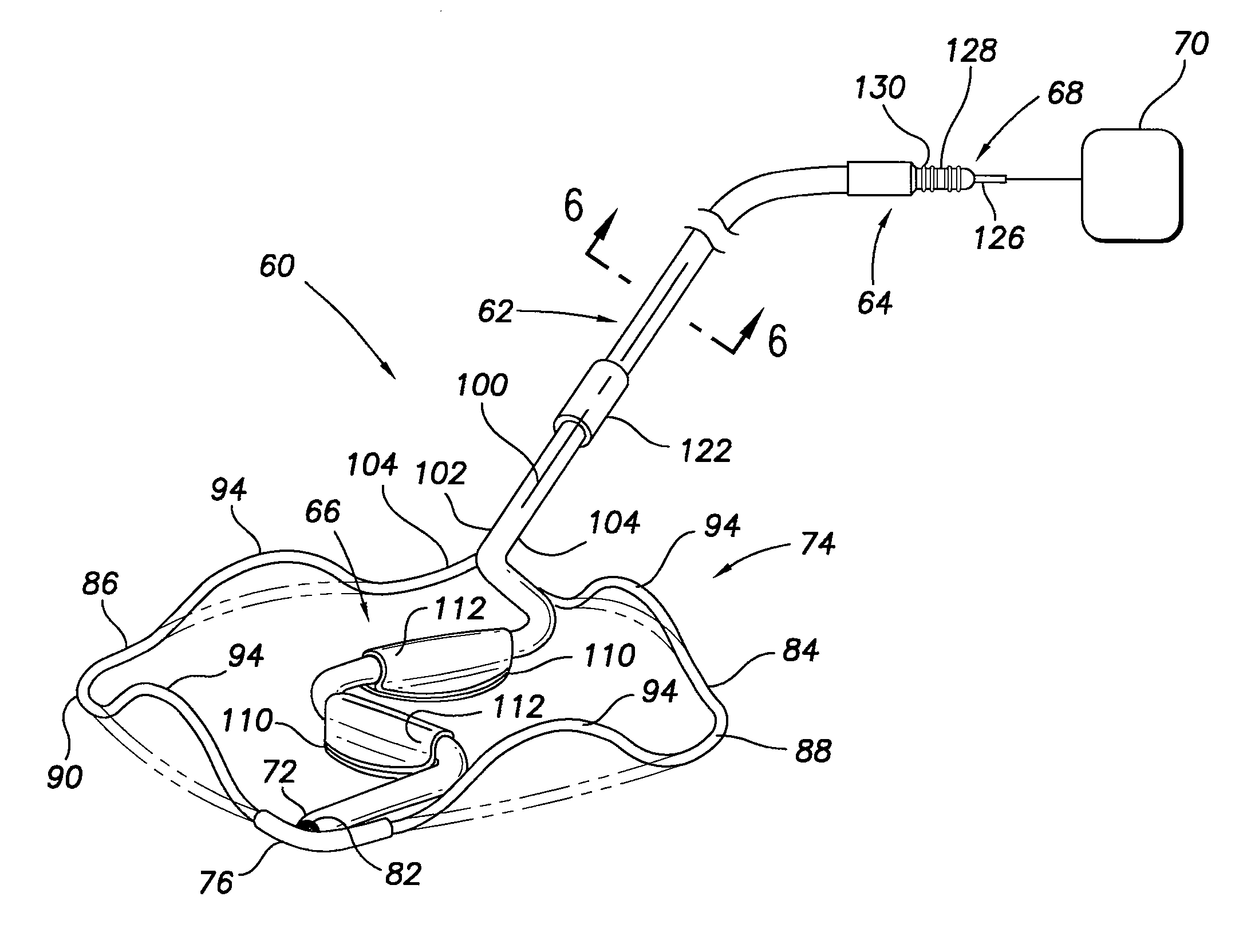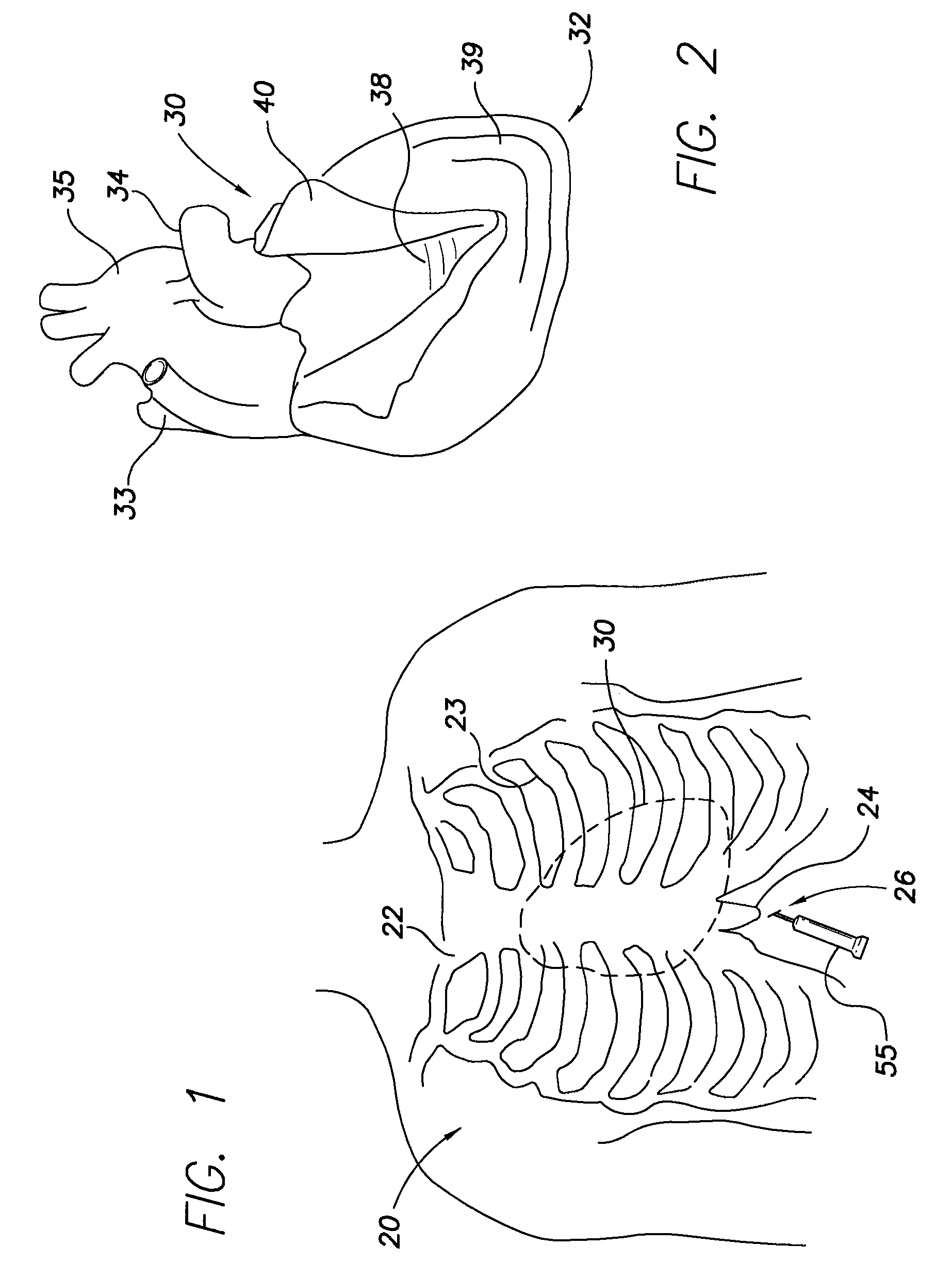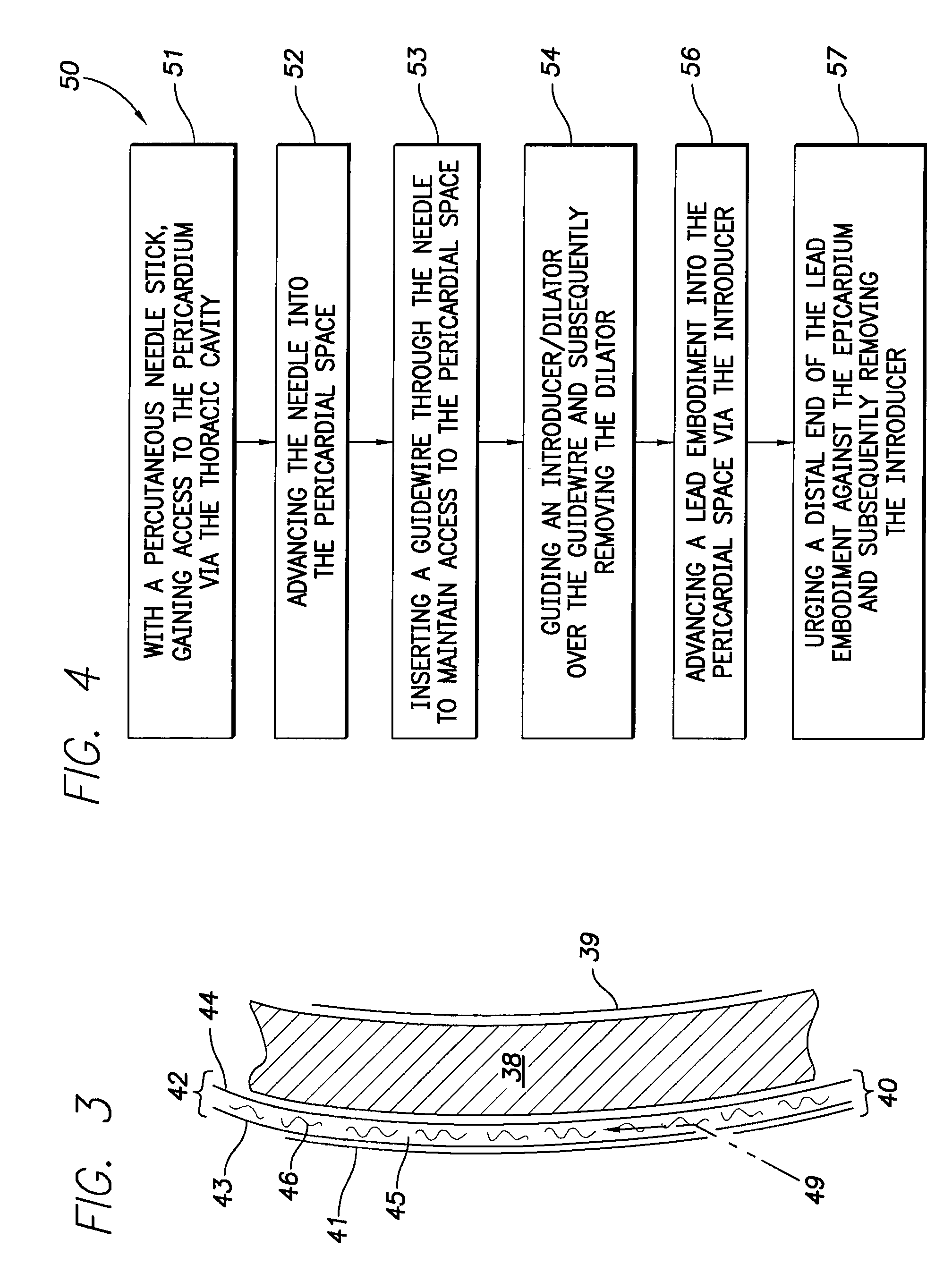Intrapericardial lead
a pericardial lead and lead technology, applied in the field of intrapericardial leads, can solve the problems of high patient morbidity, trauma and pain, and difficulty in quick and easy attachment, and achieve the effect of small frontal area and convenient delivery into the pericardial spa
- Summary
- Abstract
- Description
- Claims
- Application Information
AI Technical Summary
Benefits of technology
Problems solved by technology
Method used
Image
Examples
Embodiment Construction
[0029]The present invention is directed to cardiac lead embodiments that facilitate and enhance the accurate placement (and monitoring of that placement) of medical electrodes. Although the lead embodiments may be used in a variety of medical procedures, they are especially suited for installation as a cardiac lead into the pericardial space of the heart. This installation may be made, for example, via percutaneous subxiphoid procedures. In order to best understand the novel structure of these embodiments, their placement and their subsequent use, a description of the structure is preceded by the following review of chest and heart structures.
[0030]FIGS. 1 and 2, respectively, illustrate these structures and, in particular, the reference numeral 20 in FIG. 1 schematically illustrates the human chest and shows the sternum 22 and the ribs 23 which attach to the sternum. The ribs and the sternum form a “rib cage” which provides a protective covering around the heart, lungs and other vi...
PUM
 Login to View More
Login to View More Abstract
Description
Claims
Application Information
 Login to View More
Login to View More - R&D
- Intellectual Property
- Life Sciences
- Materials
- Tech Scout
- Unparalleled Data Quality
- Higher Quality Content
- 60% Fewer Hallucinations
Browse by: Latest US Patents, China's latest patents, Technical Efficacy Thesaurus, Application Domain, Technology Topic, Popular Technical Reports.
© 2025 PatSnap. All rights reserved.Legal|Privacy policy|Modern Slavery Act Transparency Statement|Sitemap|About US| Contact US: help@patsnap.com



